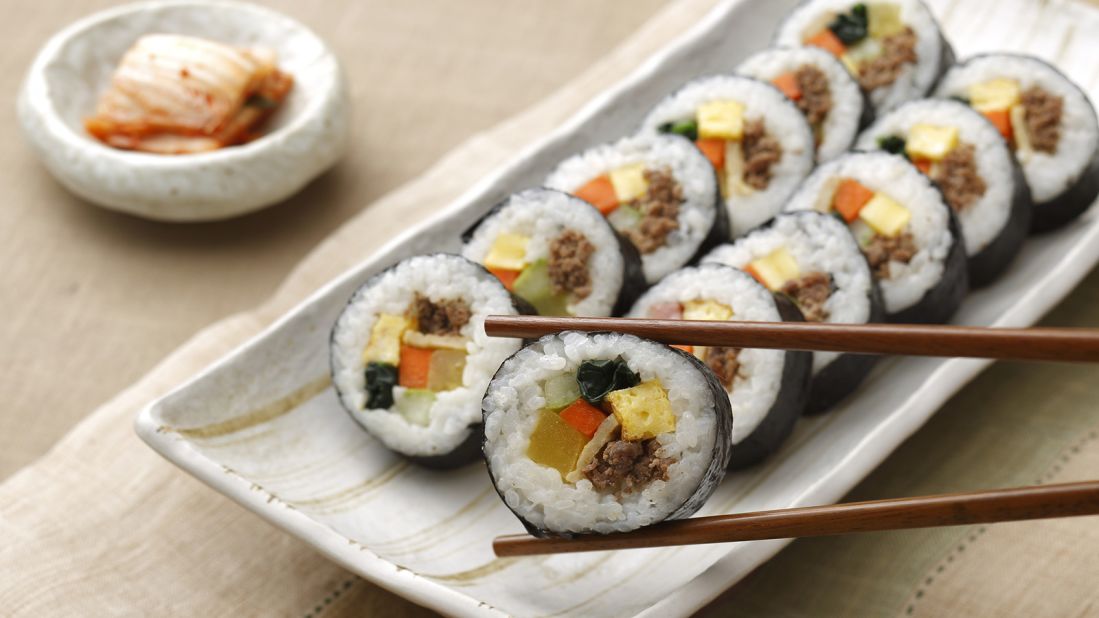A Parent’s Guide to Korean Foods: Introducing Flavorful and Nutritious Meals to Your Family
Welcome, parents! Embarking on a culinary journey with your family can be both exciting and a little daunting, especially when exploring the rich and diverse world of Korean foods. Fear not! This guide is tailor-made for you to navigate the flavors of Korea, ensuring that meals are not only mouth-wateringly delicious but also packed with nutrients that are perfect for your little ones. Let’s dive into the vibrant culture of Korean cuisine together and give your family’s dinner table a delicious makeover!
Understanding Korean Cuisine: A Blend of Tradition and Nutrition
Korean cuisine, often known for its balance of taste, texture, and nutrition, offers a wide array of dishes that are steeped in history and culture. Traditionally, meals are built around rice, vegetables, and meats, with a philosophy of harmony and balance leading the way. Korean foods are not just about satiating hunger; they are crafted to promote health and vitality, making it an excellent choice for families.
Nutritional Benefits of Korean Dishes
The key components that make Korean food wholesome include a variety of fermented dishes like kimchi, protein sources such as tofu and seafood, and an abundance of fresh vegetables. These elements provide essential vitamins, antioxidants, and probiotics that are fantastic for growing bodies and immune systems.
Introductory Korean Foods for the Whole Family
Introducing Korean foods to your family can be a fun and interactive experience. To start, you may want to ease into the cuisine with some kid-friendly favorites that are less spicy and familiar in texture and taste.
1. Bibimbap – The Mix-and-Match Rice Bowl
One of the first dishes to try is bibimbap. This colorful rice bowl is topped with an assortment of sautéed vegetables, a fried egg, and sliced meat. It’s highly customizable, making it perfect for picky eaters. Let your kids have fun mixing their bowl and adding as much or as little of the gochujang (Korean chili paste) as they like!
2. Japchae – Sweet Potato Noodles with a Rainbow of Veggies
Another great introduction is japchae, a stir-fried noodle dish made with sweet potato noodles, known as dangmyeon, and mixed with vegetables and sometimes beef. The noodles have a delightful chewy texture and the dish has a sweet and savory flavor that’s likely to win over your family.
3. Korean Pancakes – Savory and Shareable Treats
For those who love finger foods, jeon or Korean pancakes can be a great start. These can be made with virtually any ingredient, from green onions (pajeon) to seafood (haemul jeon). They’re perfect for sharing and dipping into a soy-based sauce, making mealtime both interactive and tasty.
Korean Foods: A Culinary Adventure at Home
The best part of incorporating Korean foods into your home is the opportunity to have culinary adventures without leaving your kitchen. Here’s how you can get started:
- Begin with ingredients that are familiar to your child’s palate, and slowly introduce new flavors.
- Encourage your children to help with preparing dishes. It’s a great way to get them excited about trying new foods.
- Make use of colorful vegetables and fun shapes. The vibrant presentation of Korean dishes can be very appealing to children.
Setting Up Your Korean Pantry
To effectively prepare these dishes at home, having the right ingredients is essential. A well-stocked Korean pantry should include items like soy sauce, sesame oil, gochujang, doenjang (fermented soybean paste), rice vinegar, and of course, short-grain rice. These staples will help you create authentic flavors that honor the tradition of Korean cuisine.
As we venture further into this guide, we’ll explore more intricate dishes, learn about the health benefits of Korean ingredients, and discuss ways to involve the whole family in the cooking process. Our culinary exploration will lead us through making your first batch of kimchi, discovering the delights of Korean BBQ, and demystifying the wonders of Korea’s famous side dishes, also known as banchan. Stay tuned!
Embarking on a dietary exploration with your children not only broadens their palate but also opens a window to a new culture. Integrating Korean foods into your mealtimes invites a world of flavor and nutrition that benefits the entire family. Begin this flavorful journey with anticipation and a spirit of adventure, and watch as your family’s meals transform into a delightful blend of taste and health. Happy cooking!

5 Things Parents Should Know When Preparing Korean Foods
1. The Importance of Balanced Flavors
Korean cuisine is all about the perfect balance of flavors – spicy, sweet, salty, and sour. When preparing Korean food for your family, pay close attention to these flavors, ensuring that none overpower the others. Aim for a harmonious blend that will appeal to your children’s developing taste buds and make the experience enjoyable.
2. Embrace Fermented Foods
Fermented foods such as kimchi and doenjang are staples in Korean cooking and are known for their health benefits. With probiotics, these foods aid digestion and boost the immune system. Don’t shy away from these ingredients; start with small amounts to get your family accustomed to the unique flavors.
3. Spice Level Adjustments
While many Korean dishes are known for their heat, it’s easy to adjust the spice levels when cooking for children. Use less chili paste or flakes, and provide non-spicy alternatives of popular sauces, like a mild soy or sesame sauce, so your children can still enjoy the same meals without the burn.
4. Make Cooking Interactive
Korean food often lends itself to a communal cooking experience, like assembling your own bibimbap or wrapping your own ssam (lettuce wraps). Involve your children in the process to make them more likely to try and enjoy the food. Kids are often more eager to eat something they’ve had a hand in creating.
5. Pay Attention to Dietary Restrictions
While Korean cuisine is diverse, it often includes soy, wheat, seafood, and nuts, which are common allergens. Be mindful of the ingredients, especially when introducing new foods to your children. Always check for possible allergies and have alternatives available for those with dietary restrictions.
Korean Food Exploration: Dishes to Delight The Family
Now, let’s take a glance at some Korean delicacies you could introduce to the family dinner table:
Kimchi: A World of Varieties
When you think about Korean food, kimchi is often the first thing that comes to mind. But did you know there are over a hundred types of kimchi? Start with the classic Napa cabbage kimchi and explore other varieties like cucumber or radish kimchi, which might be more kid-friendly.
Korean BBQ: A Lively Feast
Korean BBQ is not just delicious; it’s a fun and interactive way to dine with family. Whether it’s bulgogi (marinated beef) or dak (chicken), grilling at the table allows everyone to cook their meat to their liking and pair it with various banchan (side dishes) and sauces.
Tteokbokki: Comfort in a Dish
This popular snack made of chewy rice cakes in a sweet, spicy sauce is a real treat! You can easily tone down the heat for kids and add in things like fish cakes, eggs, and vegetables for a well-rounded snack or meal.
Going Beyond the Basics: Advanced Korean Dishes
As you get more comfortable, don’t be afraid to delve into more complex recipes:
Galbi Jjim: Braised Beef Short Ribs
This is a succulent, sweet, and savory dish with tender beef that’s slow-cooked with carrots and other root vegetables, making a hearty meal for the family.
Samgyetang: Ginseng Chicken Soup
For those looking for something soothing, samgyetang is a rich soup with a whole chicken stuffed with glutinous rice. It is known for its restorative properties and is especially popular during hot summer months.
Conclusion
Embarking on a dietary exploration with your children not only broadens their palate but also opens a window to a new culture. Integrating Korean foods into your mealtimes invites a world of flavor and nutrition that benefits the entire family. Begin this flavorful journey with anticipation and a spirit of adventure, and watch as your family’s meals transform into a delightful blend of taste and health. Happy cooking!
For more great articles please see here. For more information see here
Disclaimer
The articles available via our website provide general information only and we strongly urge readers to exercise caution and conduct their own thorough research and fact-checking. The information presented should not be taken as absolute truth, and, to the maximum extent permitted by law, we will not be held liable for any inaccuracies or errors in the content. It is essential for individuals to independently verify and validate the information before making any decisions or taking any actions based on the articles.




